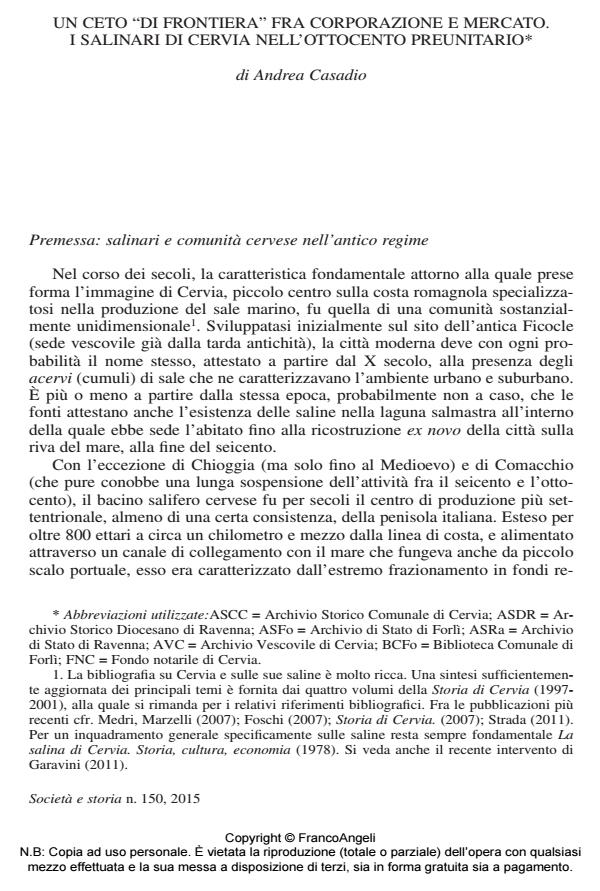A "borderline" class between corporatism and market: Cervia’s "salinari" in the pre-unitarian 19th century
Journal title SOCIETÀ E STORIA
Author/s Andrea Casadio
Publishing Year 2016 Issue 2015/150
Language Italian Pages 26 P. 721-746 File size 563 KB
DOI 10.3280/SS2015-150003
DOI is like a bar code for intellectual property: to have more infomation
click here
Below, you can see the article first page
If you want to buy this article in PDF format, you can do it, following the instructions to buy download credits

FrancoAngeli is member of Publishers International Linking Association, Inc (PILA), a not-for-profit association which run the CrossRef service enabling links to and from online scholarly content.
Ever since the Middle Ages, most of Cervia’s adult male population was employed in the local extensive saltpans. The so-called salinari built up a peculiar identity over the centuries, halfway between sharecroppers (in so far as their relationship to saltpan owners was concerned) and public servants (as regards their dependence on the State, which fixed wages and controlled the production and trade of salt). This essay examines their evolution during the passage from the Ancien Regime to the 19thcentury modernization, which was marked by two main novelties: the enactment in 1797 by the Jacobin administrators of new capitoli concerning the salinari, who lost most of their traditional privileges, and the 1824 Regolamento issued by the papal government, consisting in a partial restoration of their corporate identity. In the medium term, however, the failure of papal power to keep its promises in maintaining social security was the main factor which pushed salinari into political opposition and made them join - however belatedly - the Italian Risorgimento movement. .
Keywords: Cervia, salt pans, salt pan workers, 19th century, corporatism, market
- La storia economica contemporanea in quaranta anni di "Società e storia" Marco Doria, in SOCIETÀ E STORIA 178/2023 pp.783
DOI: 10.3280/SS2022-178007
Andrea Casadio, Un ceto "di frontiera" fra corporazione e mercato. I salinari di cervia nell’ottocento preunitario in "SOCIETÀ E STORIA " 150/2015, pp 721-746, DOI: 10.3280/SS2015-150003